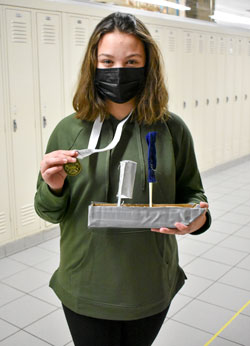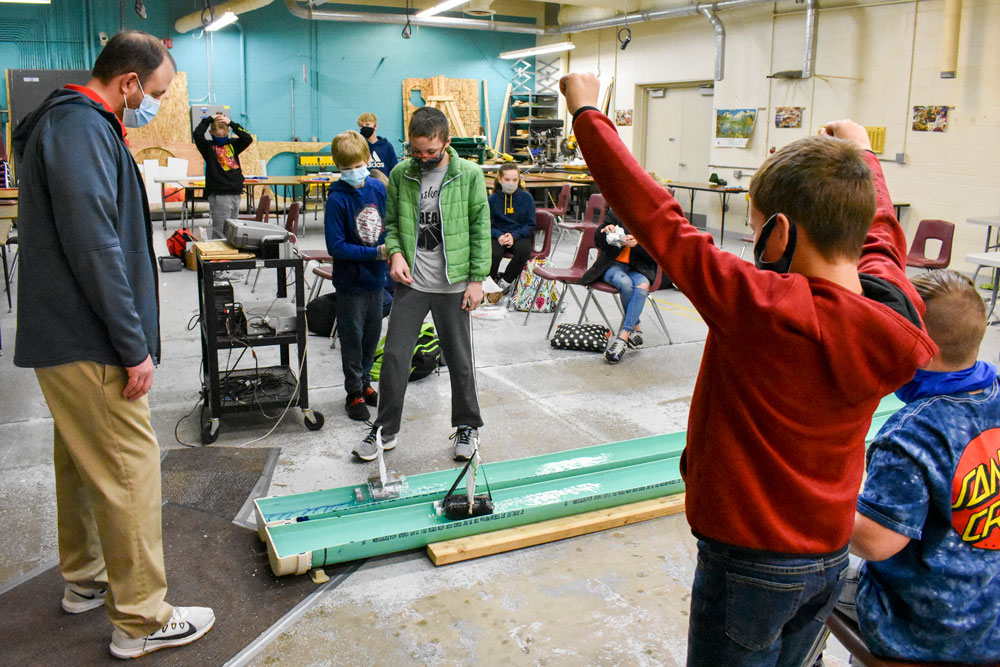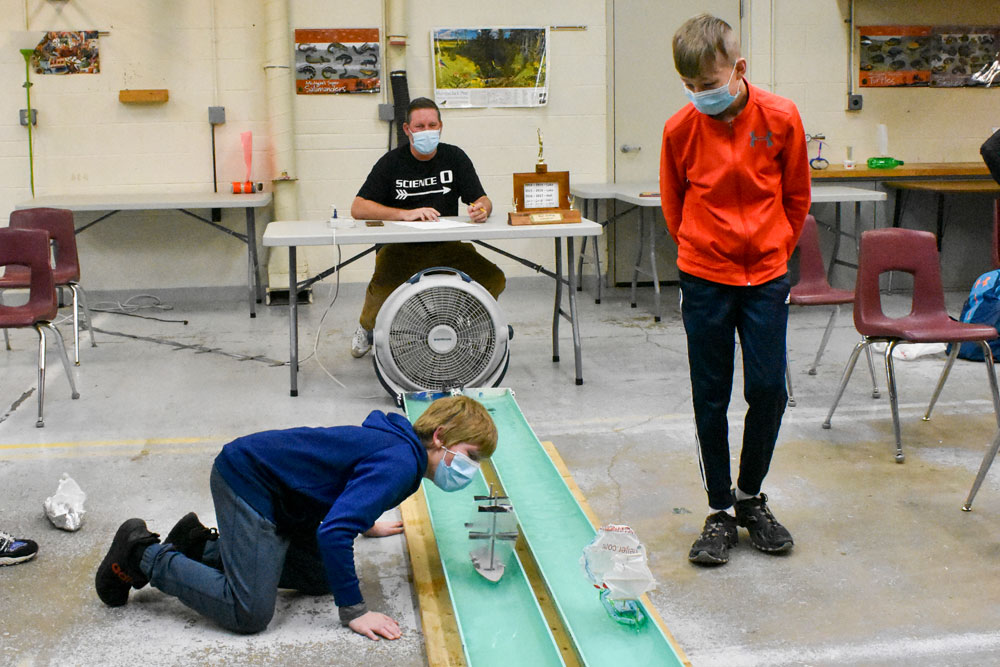Lowell — Madison Hessler’s winning vessel in her science class’ boat regatta almost didn’t get made.
The sixth-grader initially crafted a boat out of plastic pop bottles, with a hole poked on top to attach a sail. But when she tested the design in a bathtub at home, the results were less than satisfactory.
“We blew a fan on it, but it didn’t even go,” she said. “So that’s when I was like, we don’t have time, let’s just use cardboard and stuff.”

For Madison’s second design, she bent cardboard into the shape of a boat and covered the bottom with duct tape. She then used her sister’s hot glue gun to attach straws and pieces of cloth for the sail. The end result resembled boat structures she had seen online, but she didn’t have much time to test the ship’s seaworthiness before racing it in her sixth-period science class.
“I didn’t want to bring it in because I was ashamed that it didn’t look good, but I’m so glad that I brought it in because it won, and I’m super surprised,” said Madison. “I was shaking throughout the entire (competition). This was the first time I raced this one; this is crazy.”
The rain gutter regattas have become an exciting annual event for students in Jason Lake and Scott Hall’s sixth-grade science classes. The boat races come at the end of their buoyancy unit, where students study buoyant force, density and what makes objects float or sink.
For the races, students use the engineering standards and buoyancy rules they’ve learned to construct a boat out of items found around the house. The only requirements are that the vessel cannot be longer than 15 inches and no battery-powered items are allowed.
On race days, students compete in a double-elimination regatta, floating their boats along plastic rain gutters while a fan creates the necessary force to power the boats toward the finish line. The winning boat in each class period gets a point for their class.
“Basically it’s like a class competition, Lake’s students versus Hall’s students,” said Lake. “We have a goofy trophy that the winning class keeps for the year, so there’s bragging rights at stake. The kids generally get into it and have fun with it. We even have seventh- and eighth-graders who stop in when they know it’s race week and ask who’s winning.”

Students used all sorts of materials and methods to construct their boats. Lilah Cone chose two plastic pop bottles as her base because she thought the smooth plastic would glide across the water easier. She then glued on popsicle sticks to weigh it down a bit more in the water, and to ensure that the sail wouldn’t tip it over.
“It was pretty fast, but not fast enough,” said Lilah after her boat was eliminated. “I learned that a bigger sail probably would have helped. The sail is really important to catch the wind from the fan.”
Eston Brown, who has two 3D printers at home and often uses them to print what he called “a lot of weird odds and ends,” decided to go a different route in his construction. Using a web-based app, he spent a few days designing his boat’s hull, deck and mast using the principles learned in class, and then sent the design to the 3D printer. After his boat was printed, he attached tall plastic sails on top and metal weights at the bottom.
“I chose this design because it will slice through the water better, because the skinnier the boat, the faster it goes,” Eston explained. “But I learned you also need a lot of weight to counteract the weight from the tall masts. If I didn’t have enough (weights on the bottom) it would just tip over because of how tall it is. That’s why it was so slow when it started (during the races), because we have so many weights it was hard to get it moving.”
If he had to do it over, Eston said, “I would definitely try shrinking the sails up, and maybe add a front spinnaker to it, so that way I would have to add less weights on so it would get moving faster. But (my boat) did okay and survived a couple rounds, and we’re having a lot of fun in there.”
As for the overall competition, this year it ended in a 5-5 tie between the Lake and Hall classes.
“It made for an exciting finish coming down to the final races on the last day,” said Lake. “Students were excited and OK with things ending in a tie.”















